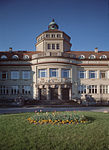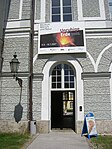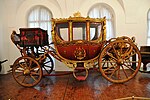Nymphenburg Palace Park

The Nymphenburg Palace Park ranks among the finest and most important examples of garden design in Germany. In combination with the palace buildings, the Grand circle entrance structures and the expansive park landscape form the ensemble of the Nymphenburg Summer Residence of Bavarian dukes and kings, located in the modern Munich Neuhausen-Nymphenburg borough. The site is a Listed Monument, a Protected Landscape and to a great extent a Natura2000 area.The exquisite composition of formal garden elements and English-style country park is considered a masterpiece of garden design and the spacious complex of palace and park has always been a popular attraction for local residents and tourists alike. To the east the park adjoins the palace buildings and the Grand circle. To the south and west the park is largely enclosed by the original Garden wall and borders the Botanical Garden to the north and beyond Menzinger Straße the park peripherie partly merges with the Kapuzinerhölzl forest. The designs of the original Baroque gardens had largely been modeled on the French gardens at Vaux-le-Vicomte and Versailles. The modern park layout is the result of a fundamental redesign by Friedrich Ludwig Sckell, beginning in 1799. The park area within the Garden wall occupies 180 hectares and the complete complex covers 229 hectares.
Excerpt from the Wikipedia article Nymphenburg Palace Park (License: CC BY-SA 3.0, Authors, Images).Nymphenburg Palace Park
Radlkofer-Weg, Munich Nymphenburg
Geographical coordinates (GPS) Address Nearby Places Show on map
Geographical coordinates (GPS)
| Latitude | Longitude |
|---|---|
| N 48.157777777778 ° | E 11.492777777778 ° |
Address
Pagodenburg
Radlkofer-Weg
80638 Munich, Nymphenburg
Bavaria, Germany
Open on Google Maps









